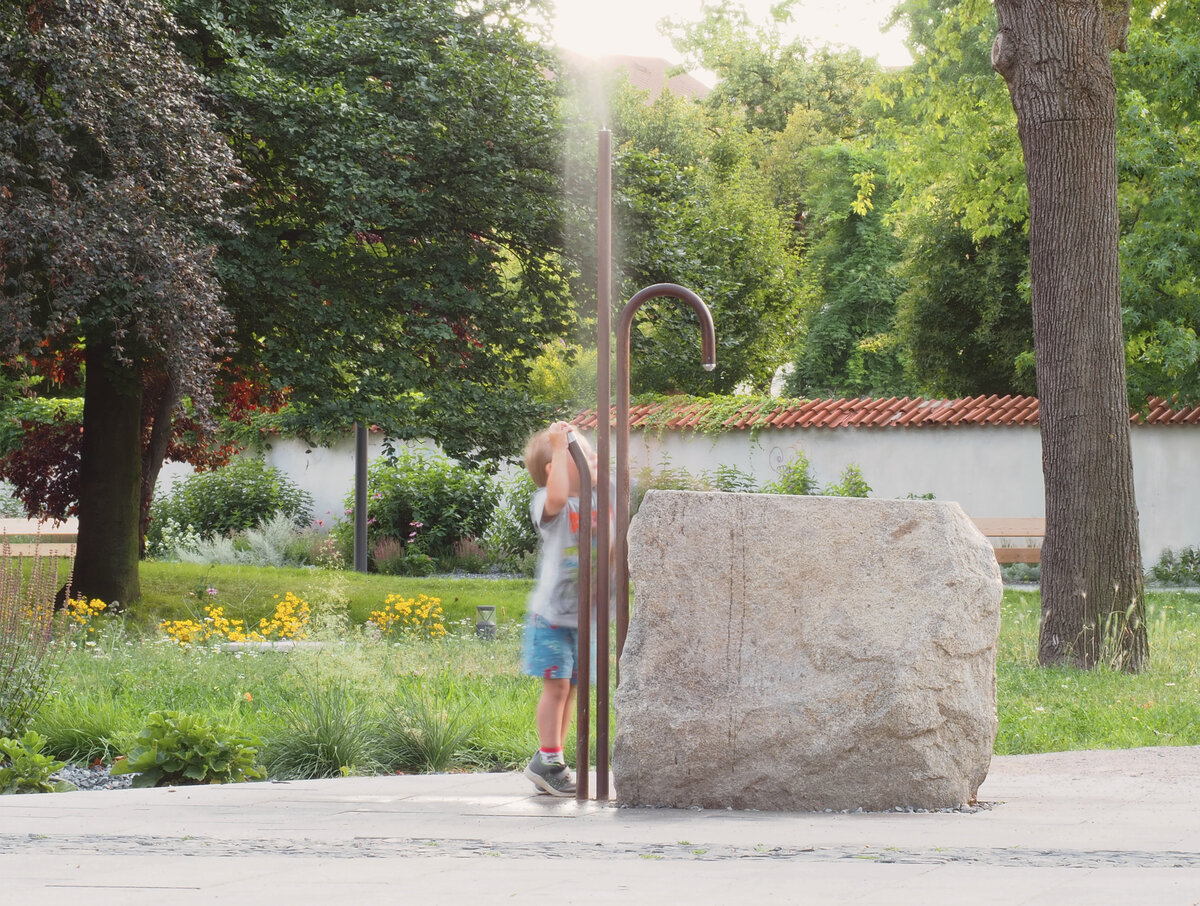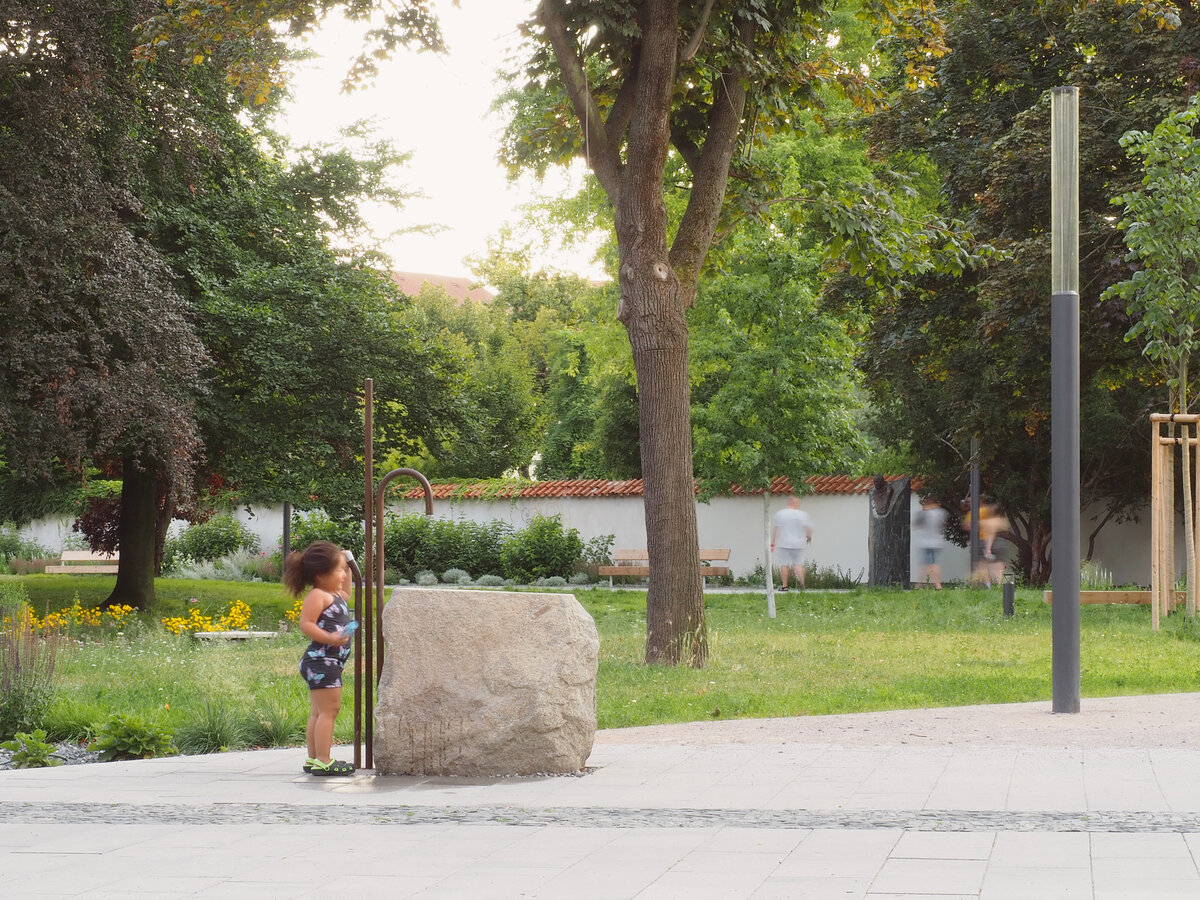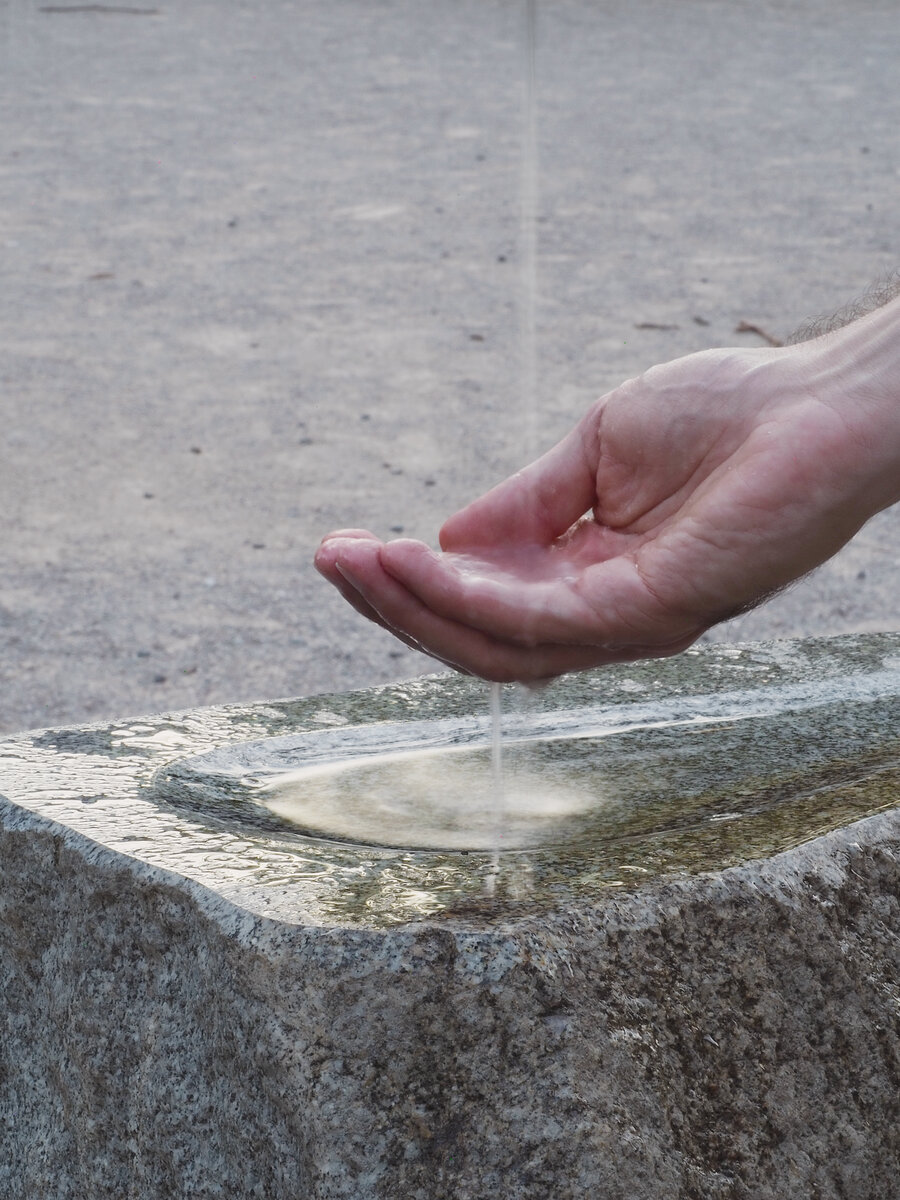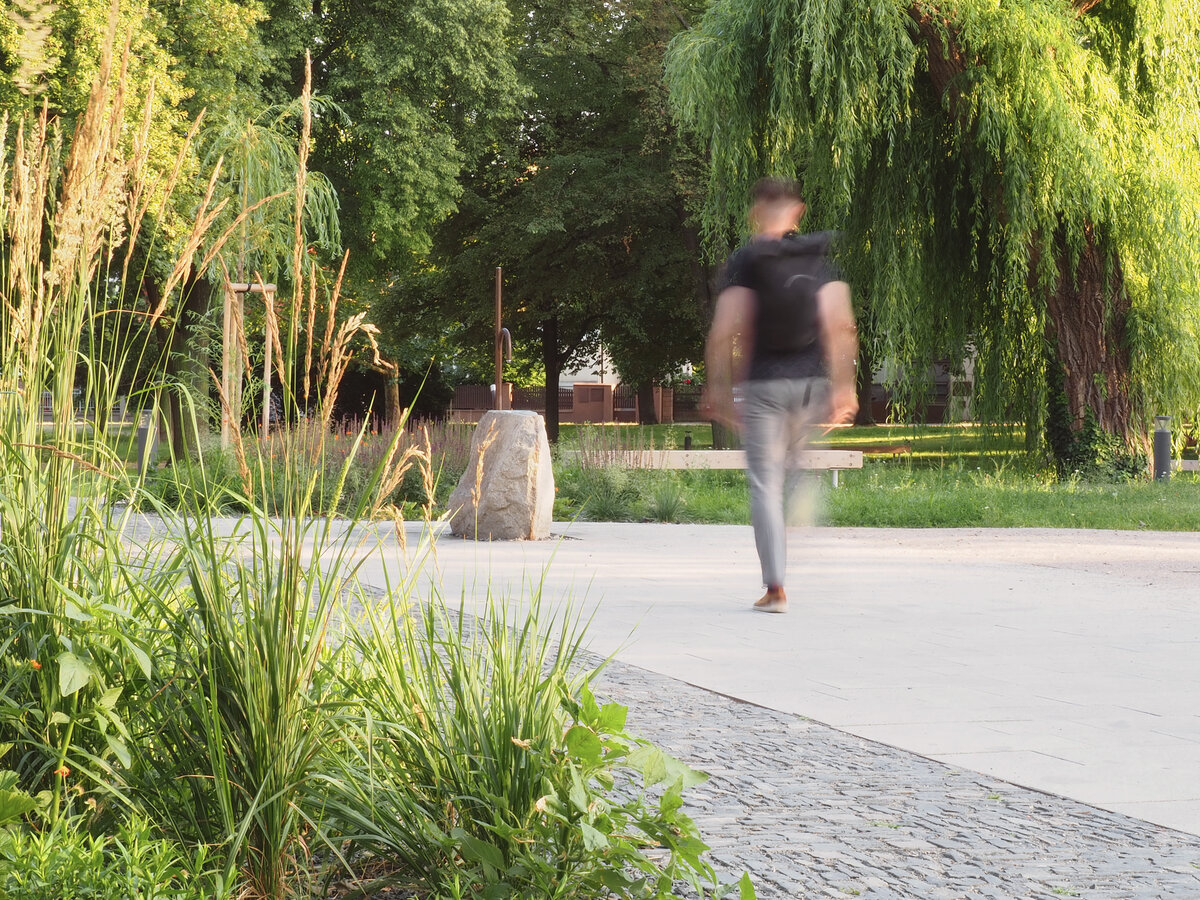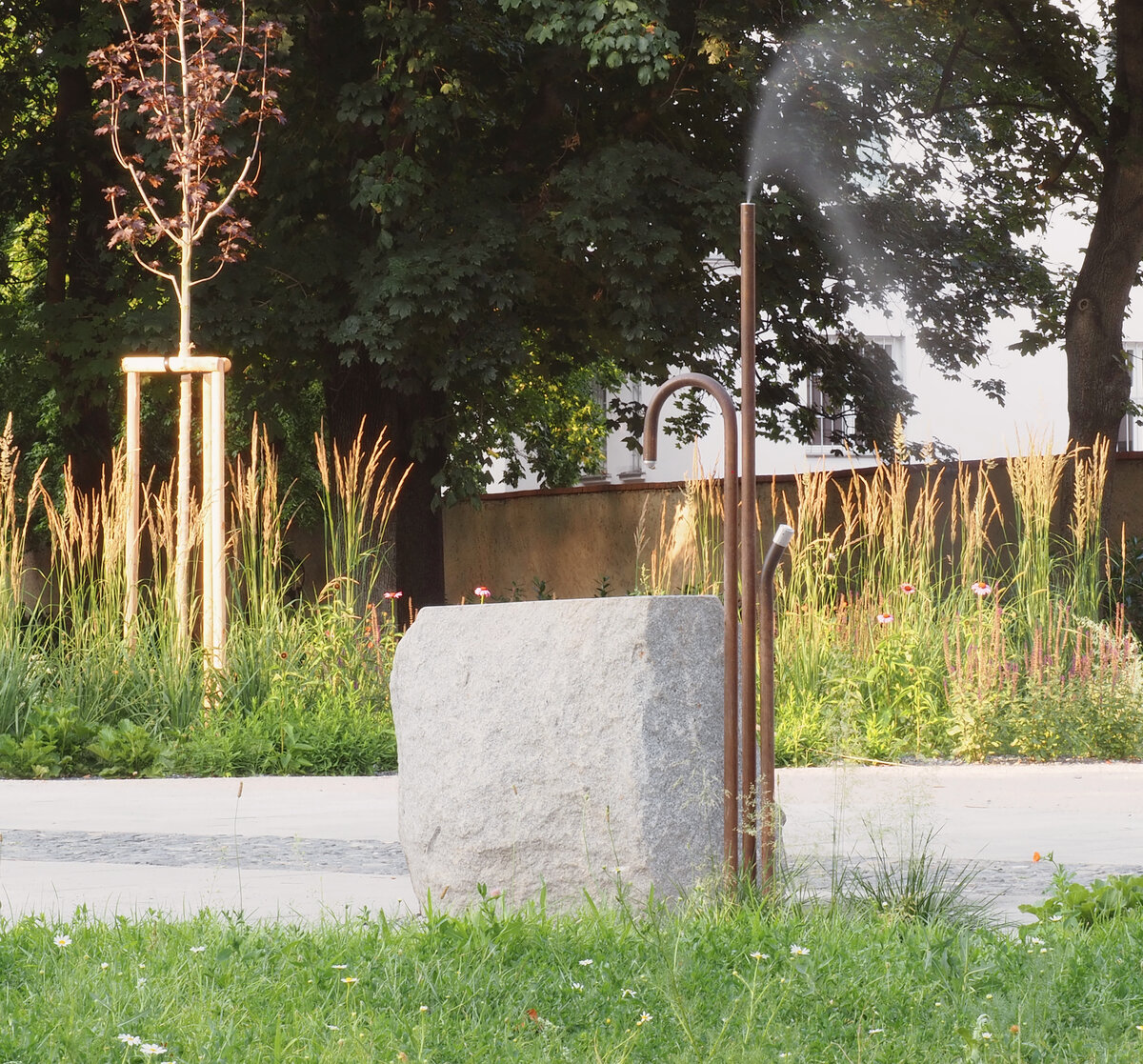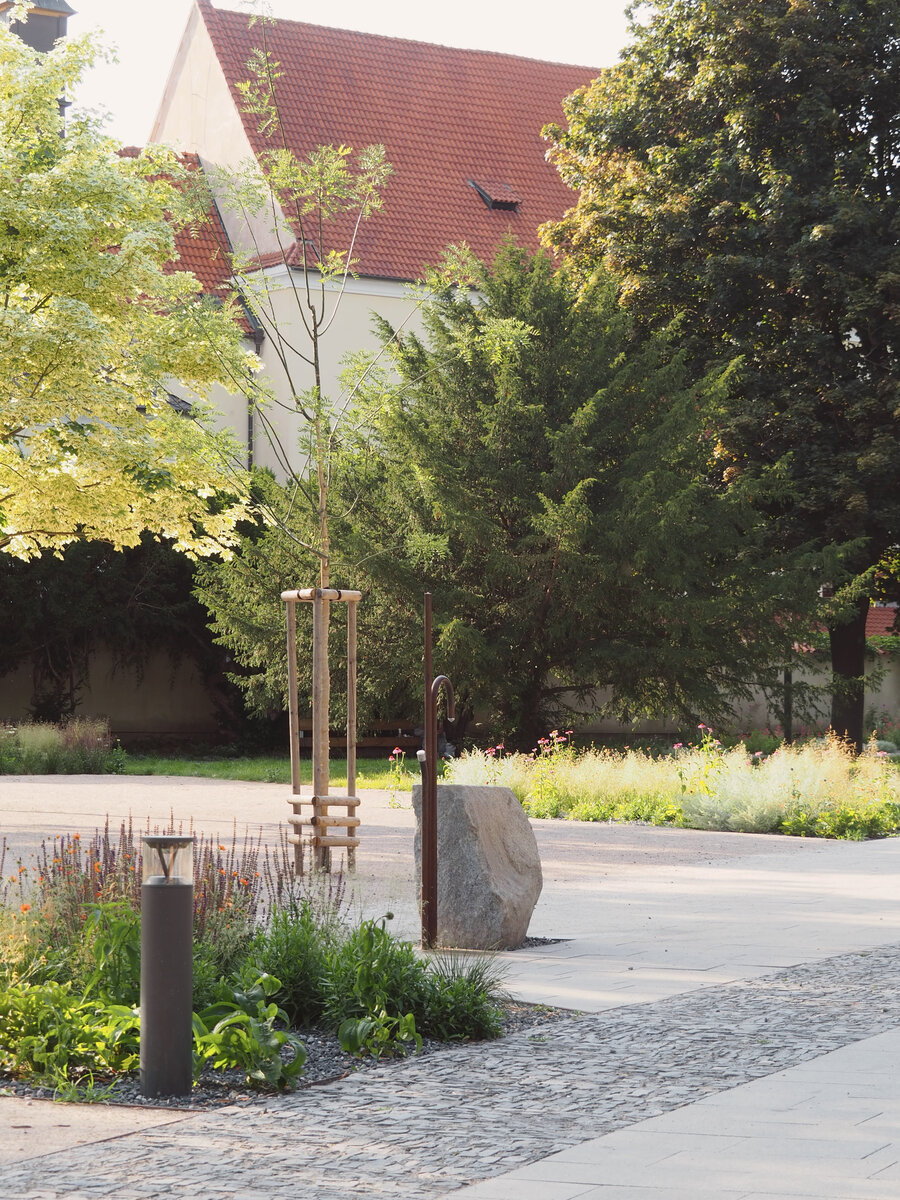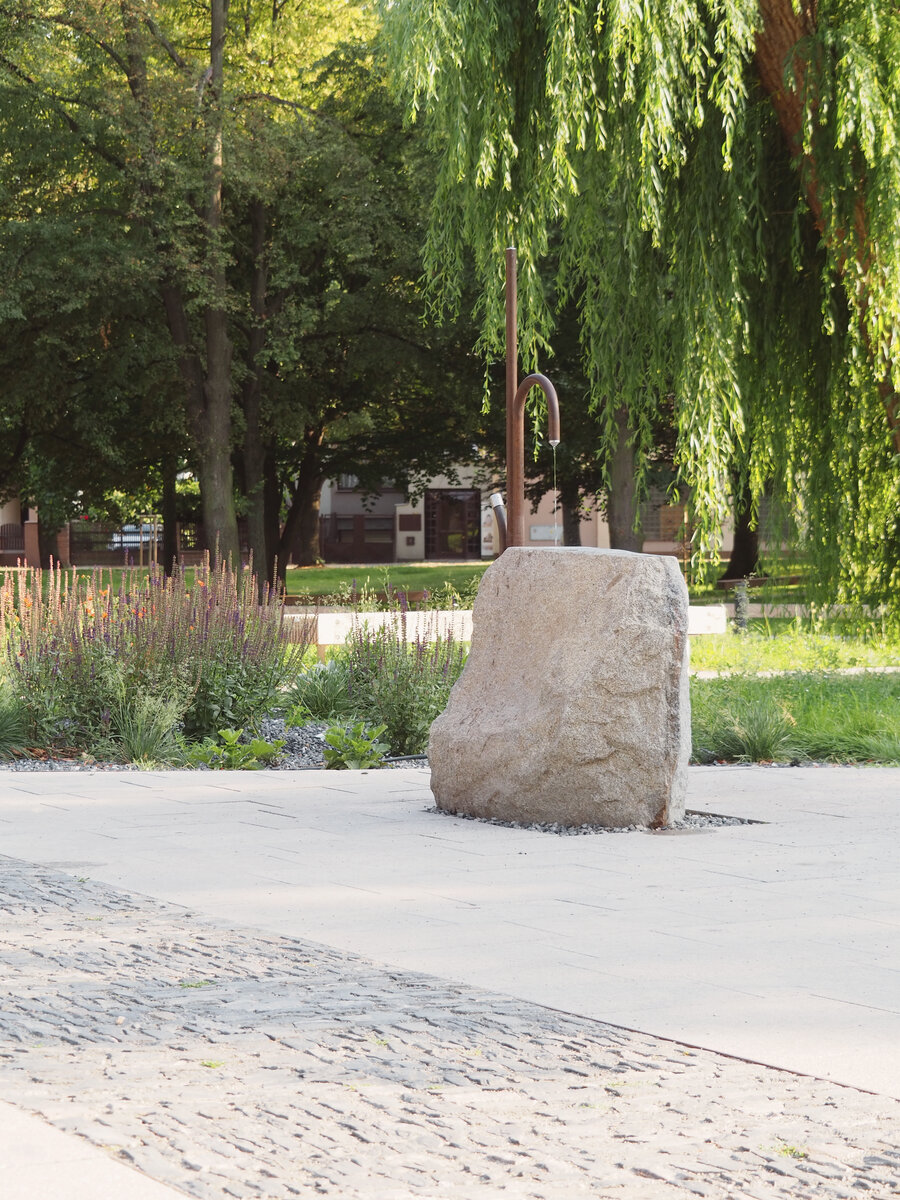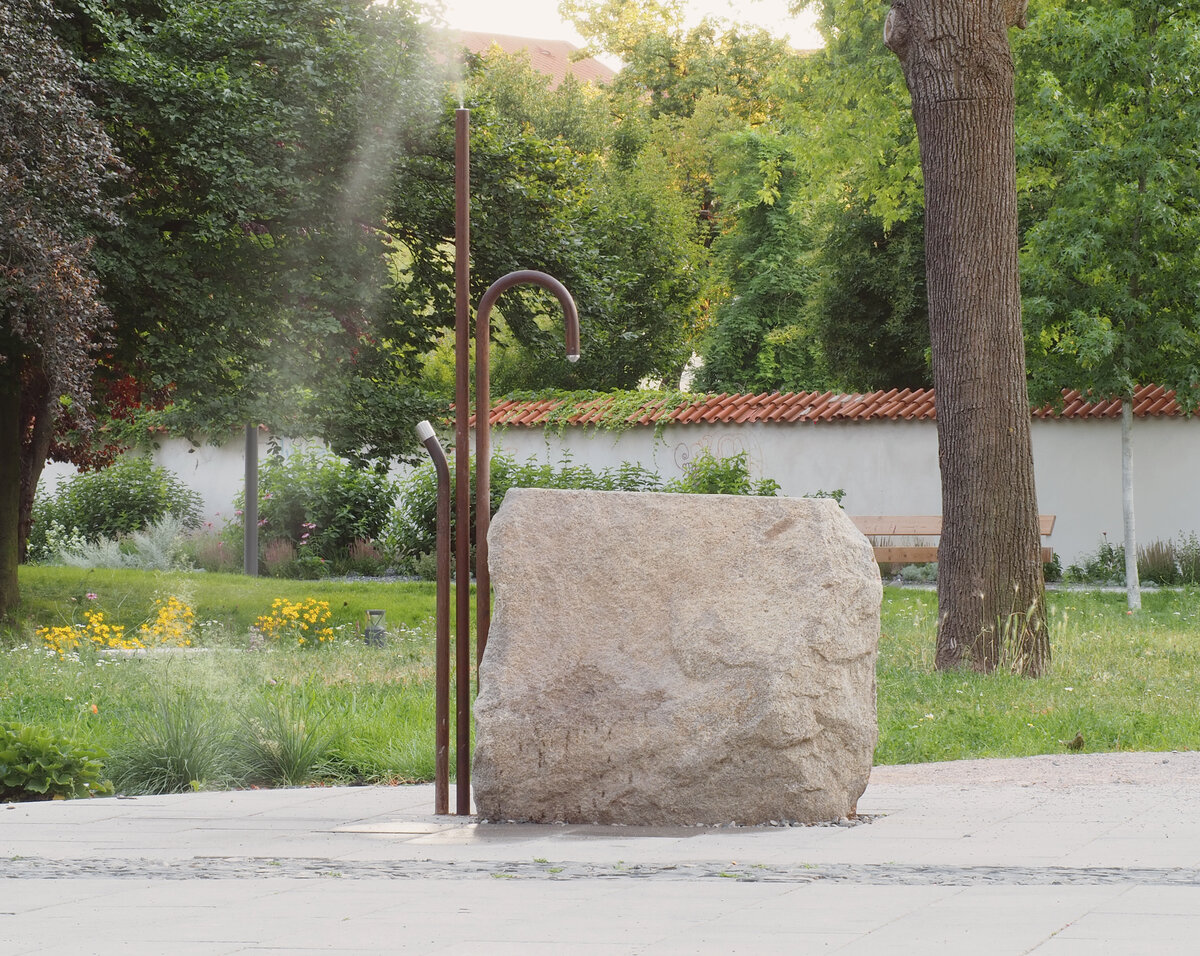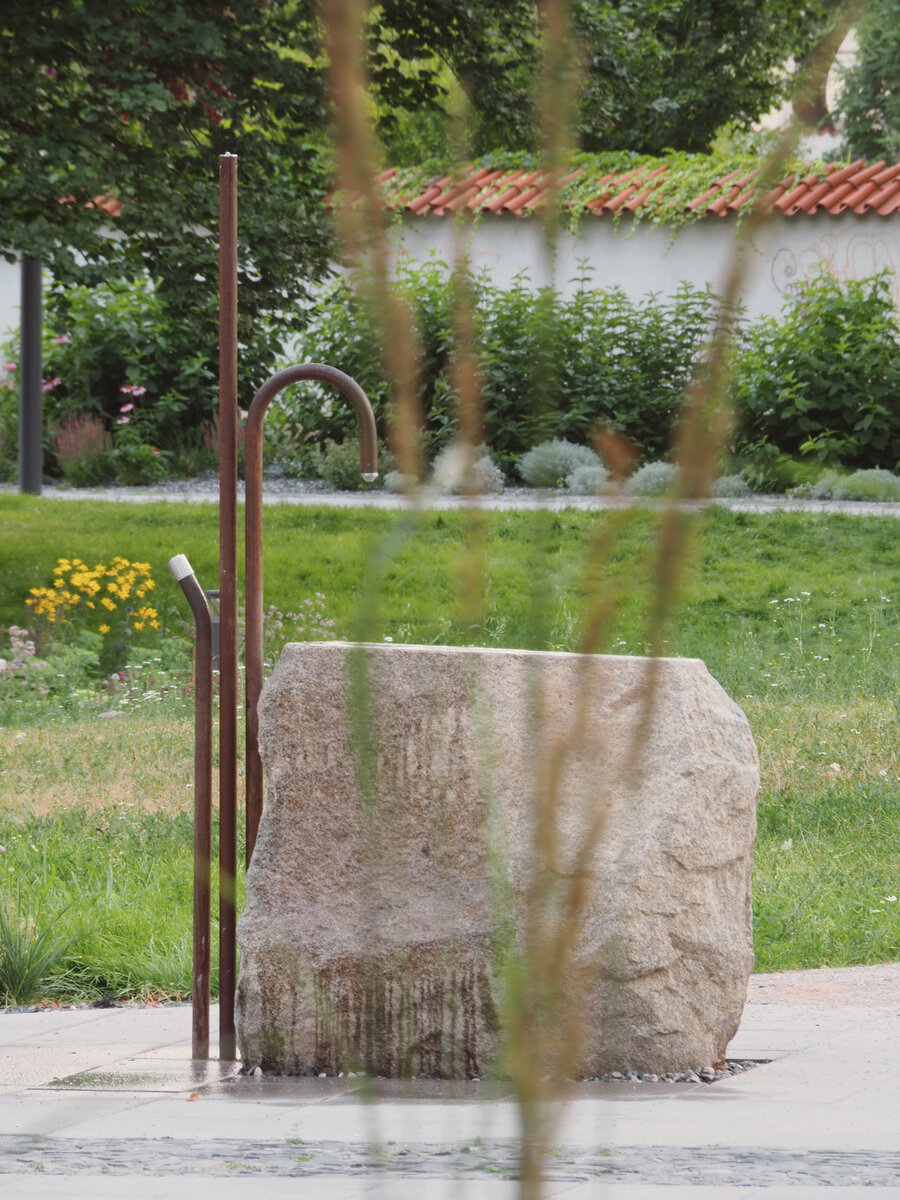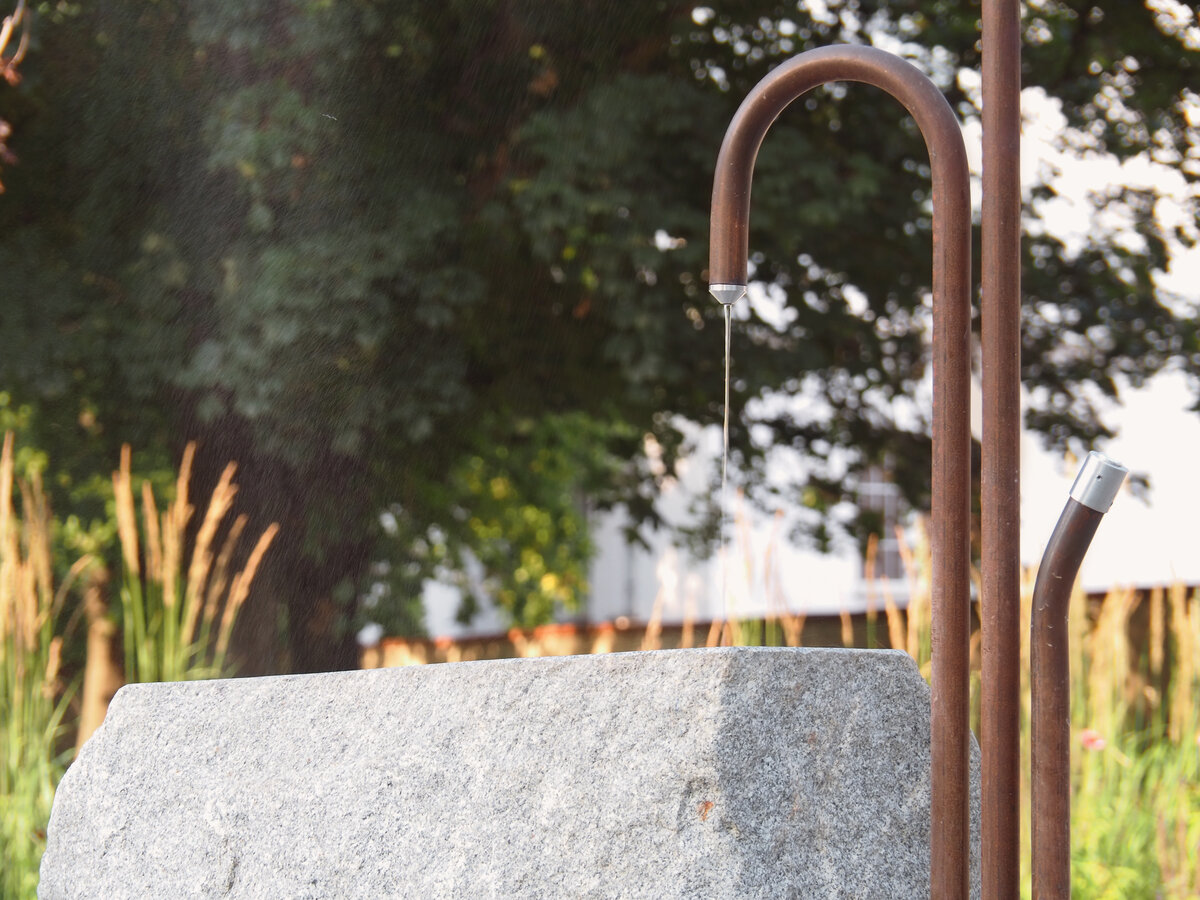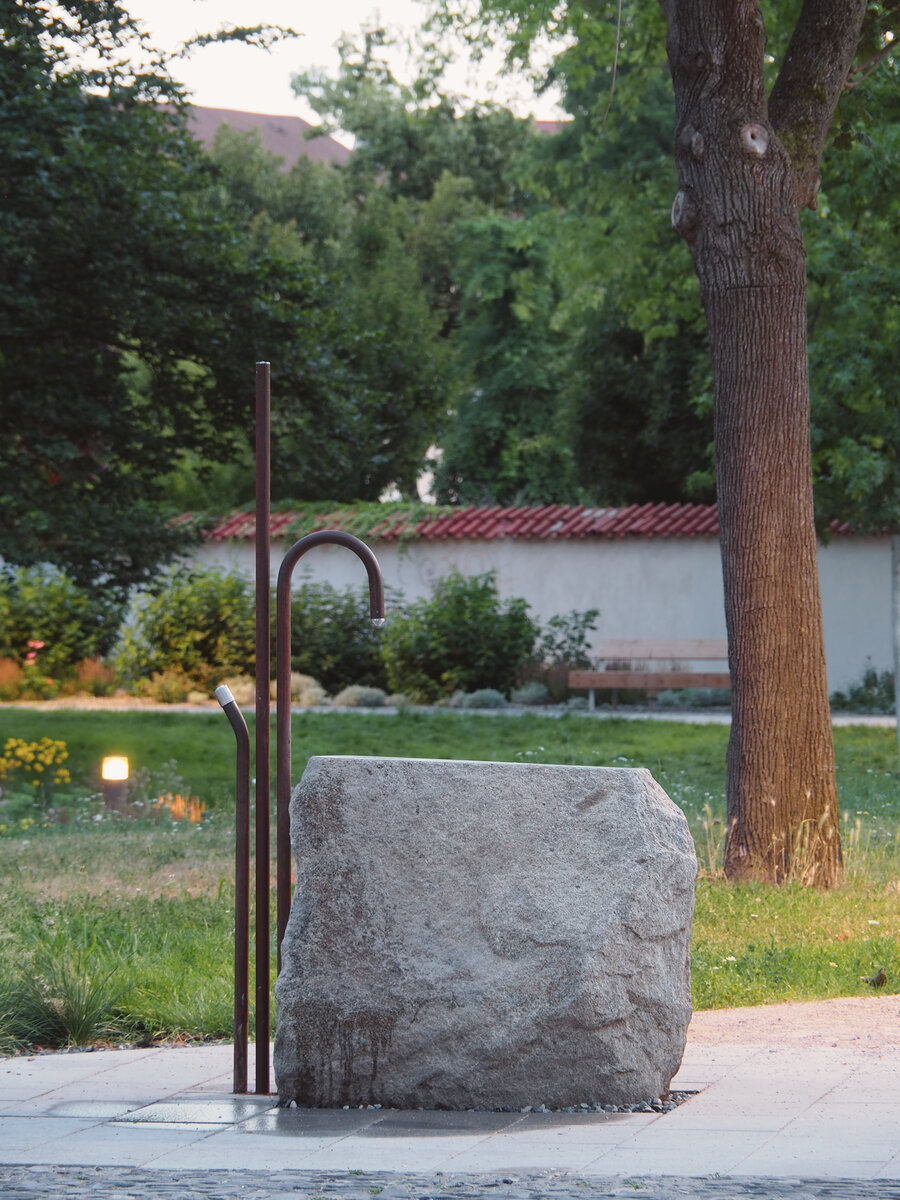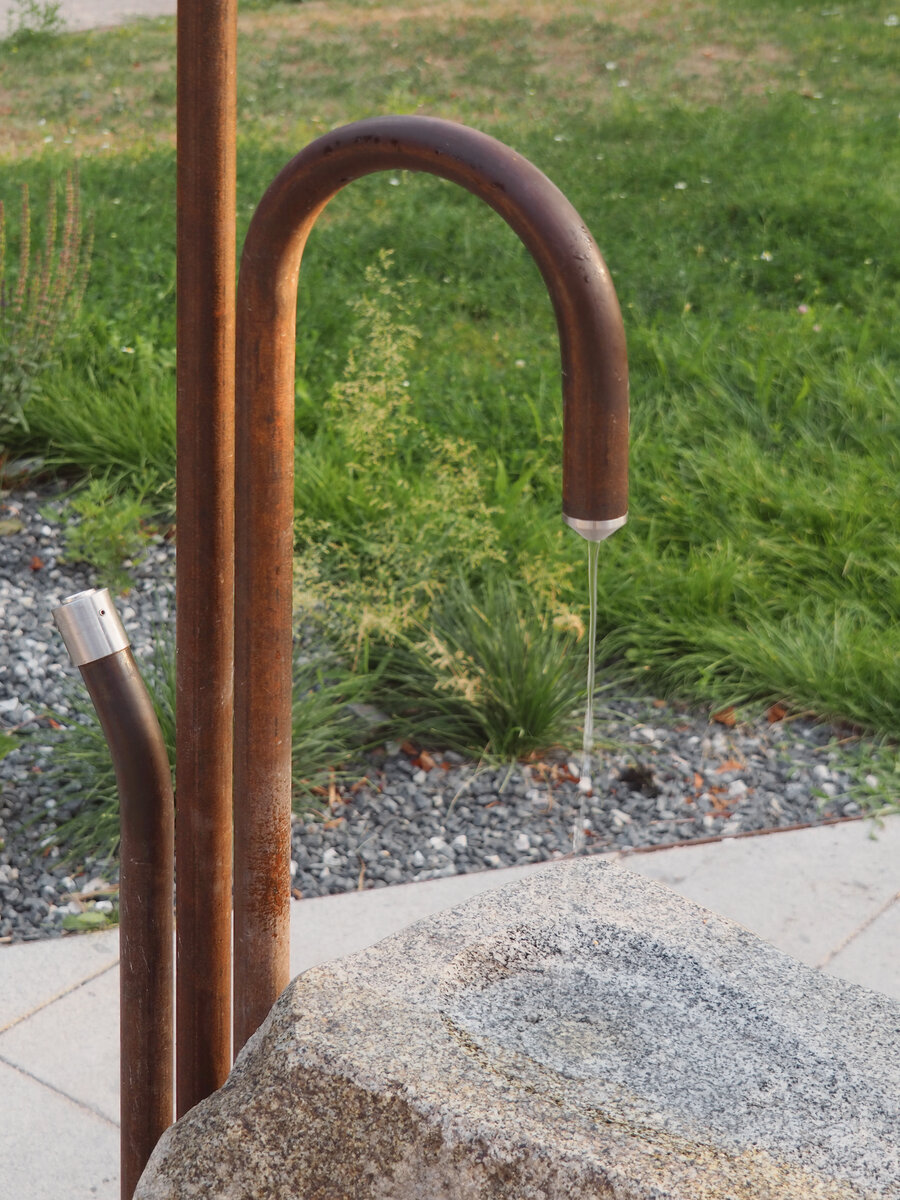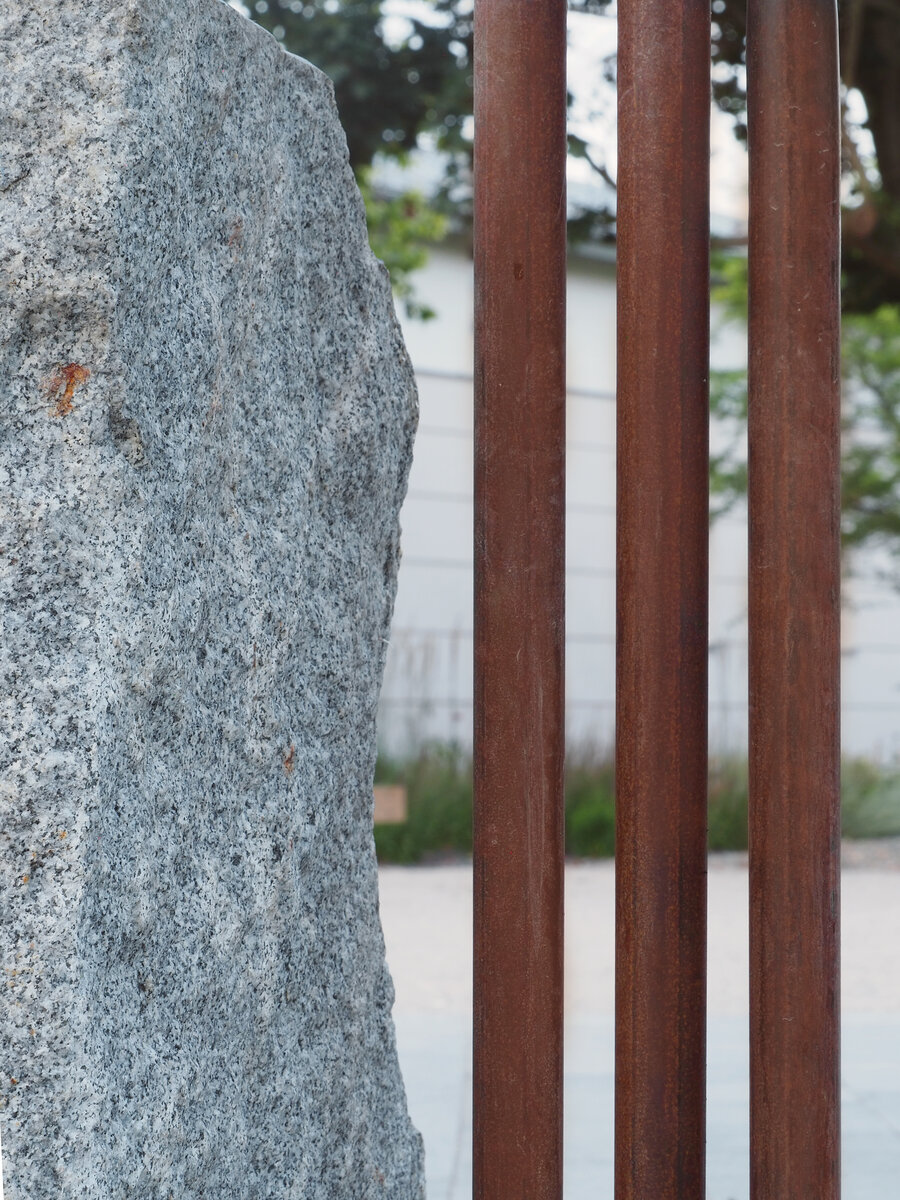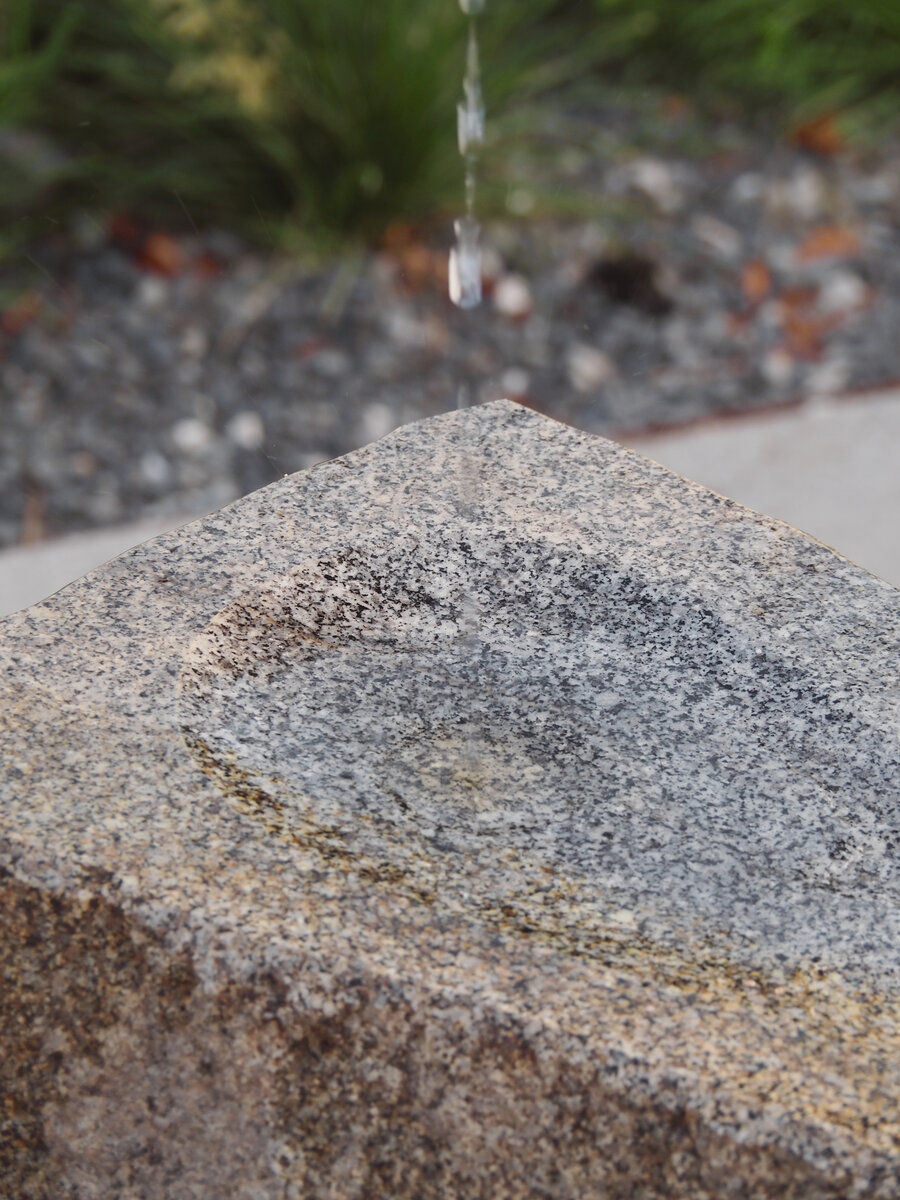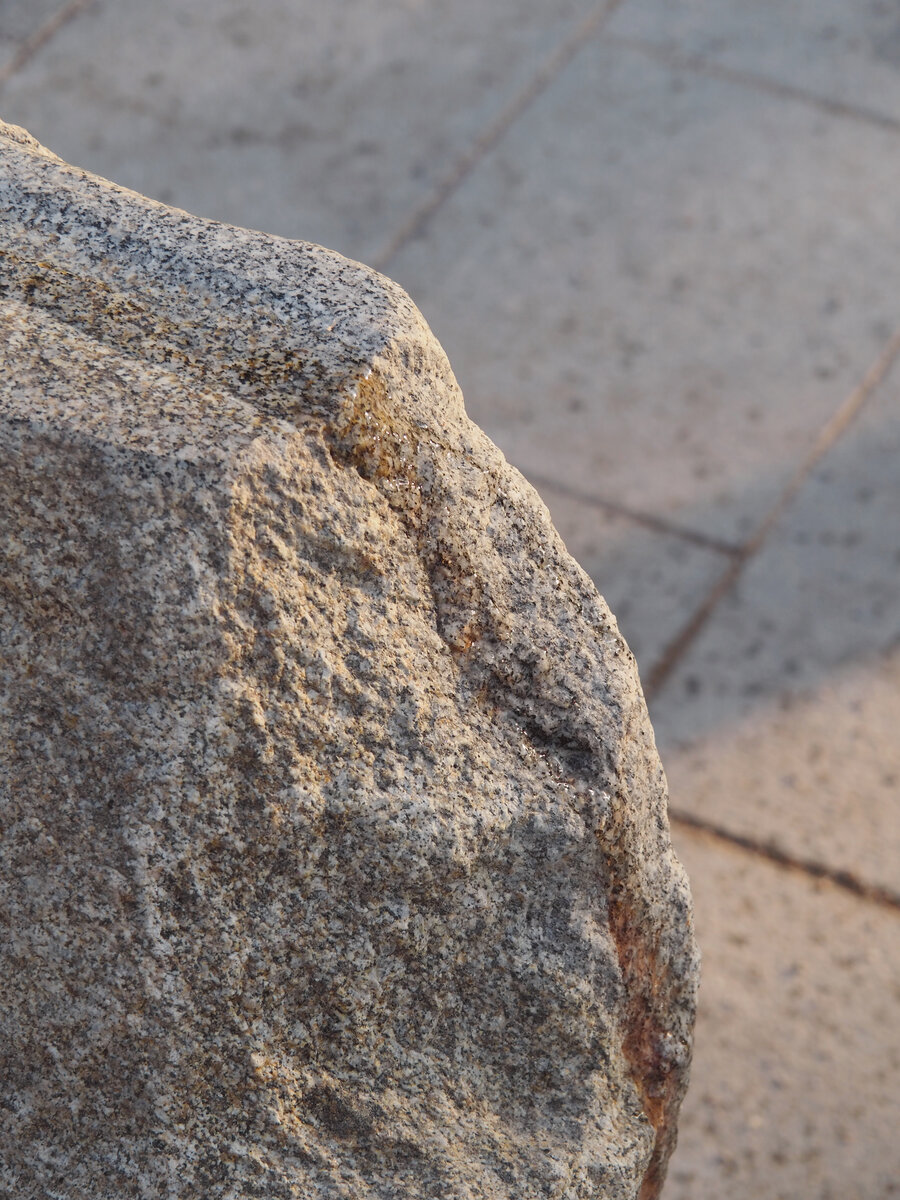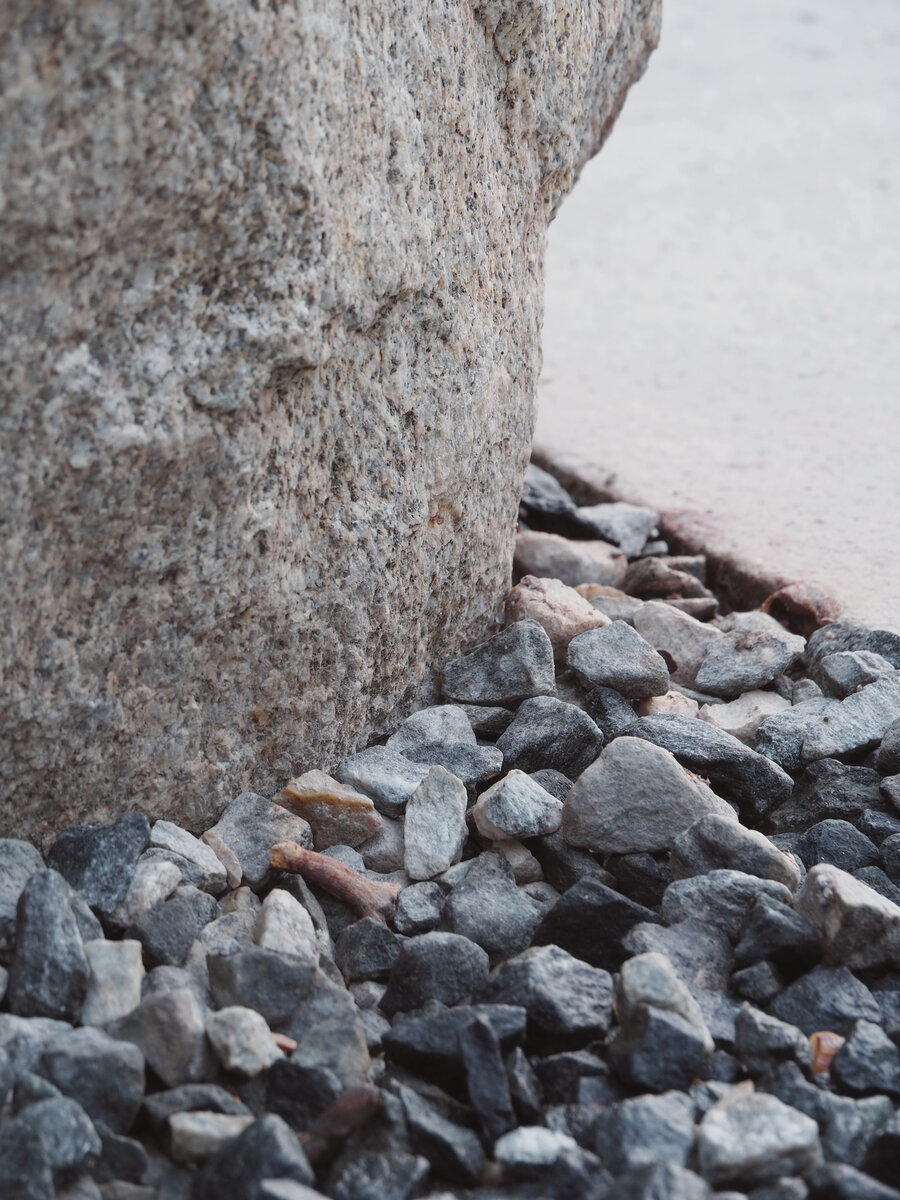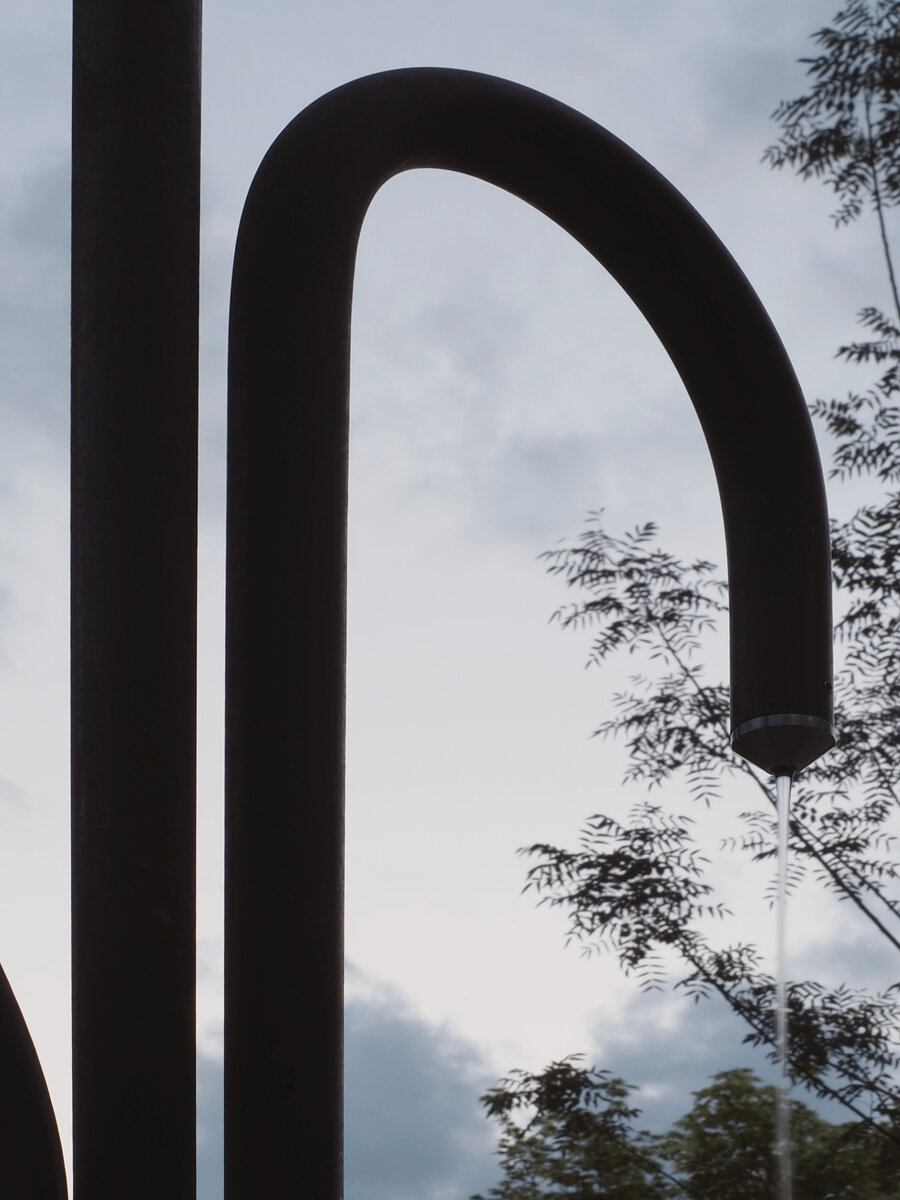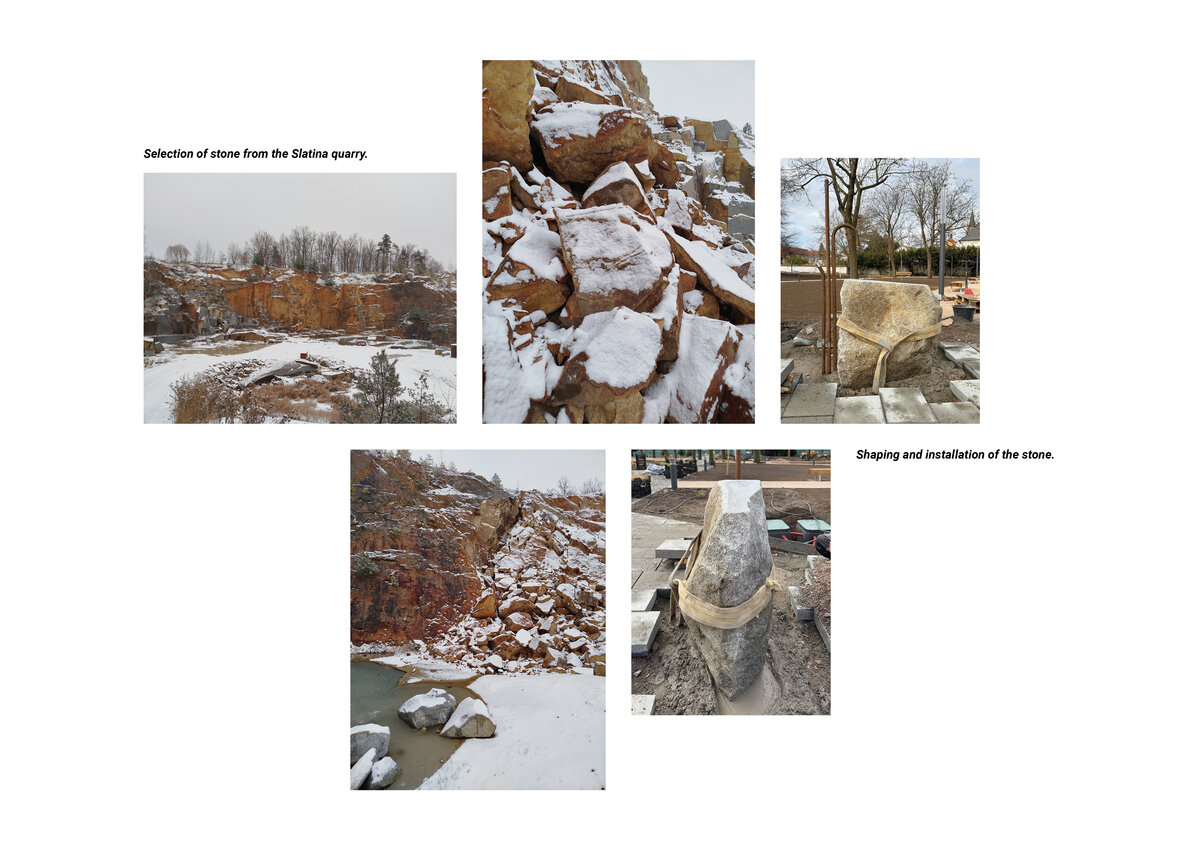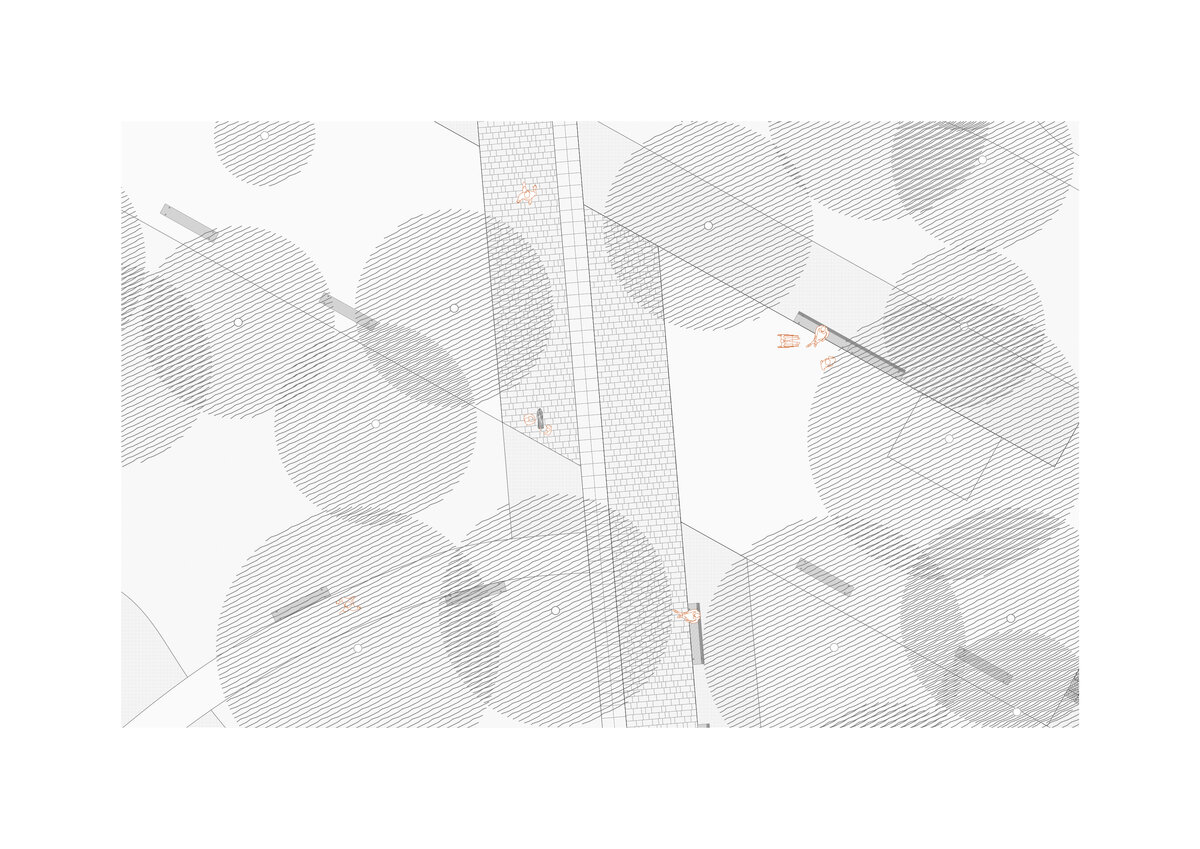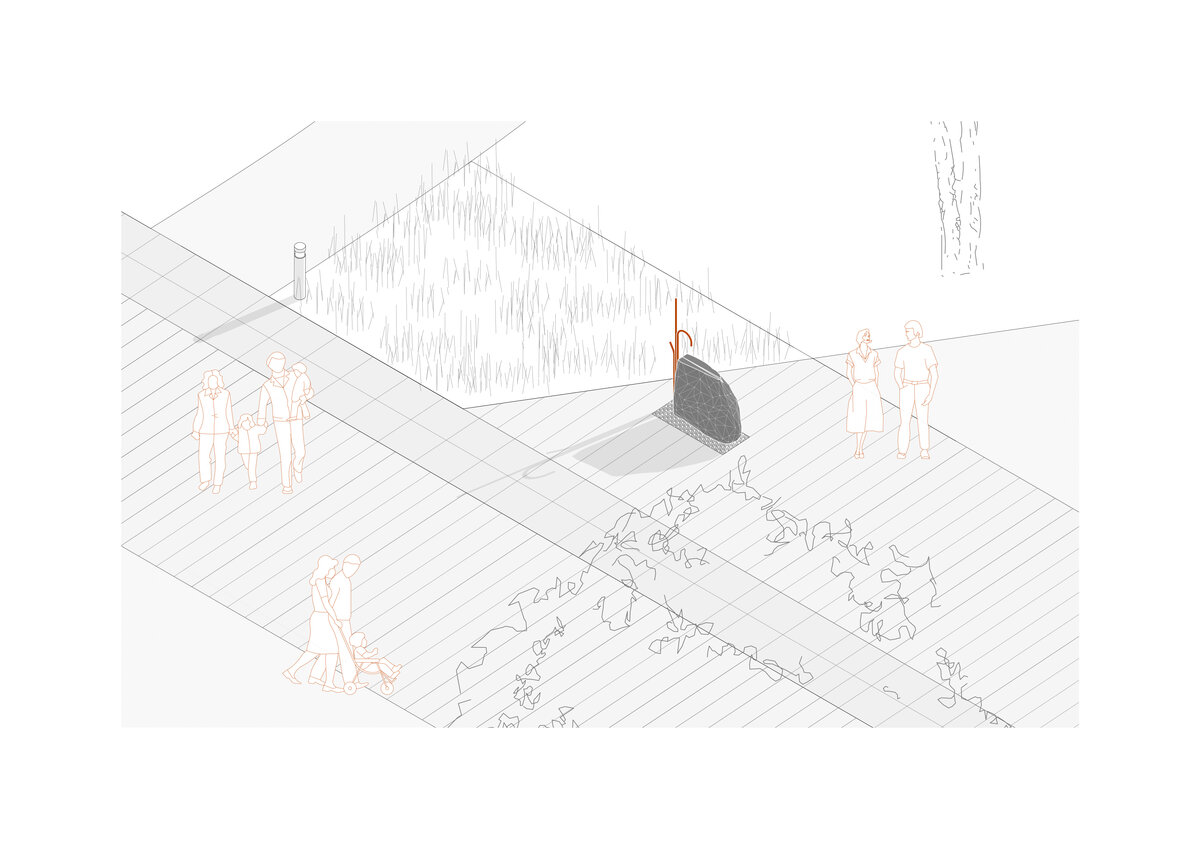| Author |
Jakub Vašek, Igor Hobza |
| Studio |
Jakub Vašek + monom |
| Location |
Kolín, Komenského park |
| Collaborating professions |
KTS-AME s.r.o. - technologie vodního prvku |
| Investor |
Město Kolín |
| Supplier |
Sates Čechy s.r.o.
KTS-AME s.r.o |
| Date of completion / approval of the project |
March 2025 |
| Fotograf |
Jakub Vašek |
As part of the revitalization of Kolín’s most prominent urban park, initiated on the basis of the winning architectural competition held in 2018, the opportunity arose to install an unconventional artistic element in its central area. The theme of water – the picturesque flow of the Elbe River, an integral part of Kolín’s identity – inspired the design of an artistically crafted drinking fountain with a mist feature, which now serves as a prominent accent in the core of Komenský Park. At the intersection of two main axes – a diagonal pathway and a gravel strip spatially and symbolically connected to the nearby monastery – a natural focal point is formed: a place to pause, and during hot summer months, a sought-after spot for refreshment.
The core idea builds upon the existing pair of stone sculptures already placed within the park, which is reflected in both the material and compositional approach. The dominant element of the fountain is a raw, nearly unshaped stone block, carefully selected by us from the Slatina quarry. This is a biotite granodiorite containing mafic xenoliths, which introduce an earthy coloration to the medium-grained granite structure through iron content. Water flows freely across the stone’s surface, creating an element that is not only visually striking, but also appealing to touch and sound.
A trio of vertically arranged, differently shaped pipes made of pre-weathered steel references the classic form of a well pump. This archetypal motif links history with the present while forming a clear and intelligible composition. Through its natural patina, corten steel gradually acquires a rich rusty-brown tone, visually complementing the surrounding natural materials and the lush, colorful vegetation.
Drinking water is supplied via flexible hoses running from an inspection chamber hidden in a nearby planting bed. The hoses are enclosed in steel conduit and ensure a hygienic supply to stainless steel fittings.
Each pipe serves a distinct function: the first acts as the activation point for the fountain, fitted with a touch sensor. The middle pipe contains a misting nozzle that offers gentle refreshment on hot days—it is connected to a timer and activates at preset intervals. The third pipe dispenses drinking water, which is directed across the top surface of the stone and allowed to trickle down naturally. The water is then absorbed into the soil through a layer of pebbles.
The fountain with misting feature represents a synthesis of technical function and artistic expression. It respects the park’s context, responds to its material and immaterial layers, and introduces a new functional element that serves both practical needs and as a place for pause, refreshment, and visual experience.
Green building
Environmental certification
| Type and level of certificate |
-
|
Water management
| Is rainwater used for irrigation? |
|
| Is rainwater used for other purposes, e.g. toilet flushing ? |
|
| Does the building have a green roof / facade ? |
|
| Is reclaimed waste water used, e.g. from showers and sinks ? |
|
The quality of the indoor environment
| Is clean air supply automated ? |
|
| Is comfortable temperature during summer and winter automated? |
|
| Is natural lighting guaranteed in all living areas? |
|
| Is artificial lighting automated? |
|
| Is acoustic comfort, specifically reverberation time, guaranteed? |
|
| Does the layout solution include zoning and ergonomics elements? |
|
Principles of circular economics
| Does the project use recycled materials? |
|
| Does the project use recyclable materials? |
|
| Are materials with a documented Environmental Product Declaration (EPD) promoted in the project? |
|
| Are other sustainability certifications used for materials and elements? |
|
Energy efficiency
| Energy performance class of the building according to the Energy Performance Certificate of the building |
|
| Is efficient energy management (measurement and regular analysis of consumption data) considered? |
|
| Are renewable sources of energy used, e.g. solar system, photovoltaics? |
|
Interconnection with surroundings
| Does the project enable the easy use of public transport? |
|
| Does the project support the use of alternative modes of transport, e.g cycling, walking etc. ? |
|
| Is there access to recreational natural areas, e.g. parks, in the immediate vicinity of the building? |
|
